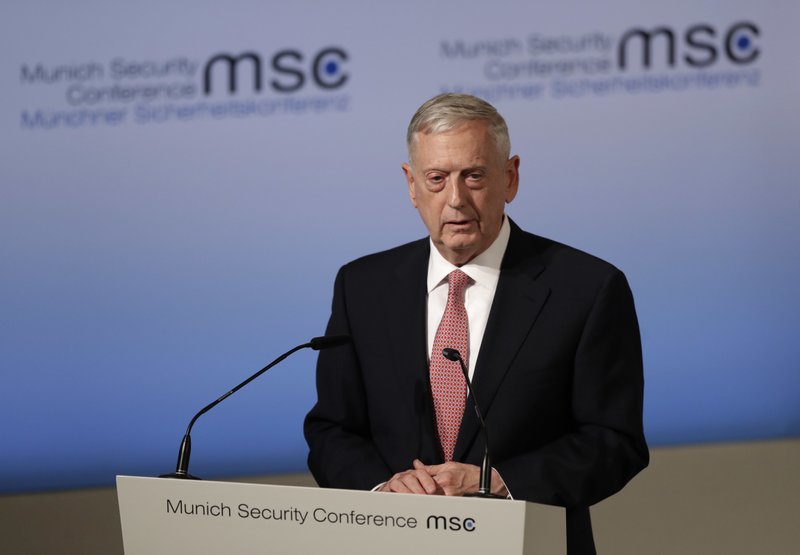ABU DHABI, United Arab Emirates -- U.S. Defense Secretary Jim Mattis said he plans to make some decisions soon on whether to recommend an increase in the number of U.S. troops in Afghanistan and whether the totals should be based on military requirements rather than preset limits.
Mattis told reporters traveling with him that he spoke for several hours by videoconference on Sunday with U.S. Gen. John Nicholson, the top American commander there. Mattis said he will collect his thoughts and then send recommendations to the White House where, he said, President Donald Trump is open to his advice.
Earlier this month, Nicholson told the Senate Armed Services Committee that he needs a few thousand more troops to train and advise Afghan forces.
At the time, Nicholson didn't provide an exact number, but argued for greater flexibility in setting U.S. troop commitments in Afghanistan, where the war is entering its 16th year. Defense and military leaders would prefer a troop level based on military requirements, rather than on a specific, predetermined number.
"The president has been rightfully reticent on it because he's waiting for my assessment and the assessment from the intelligence community," Mattis said during a news conference. "It shouldn't take too long. I've got to integrate a fair number of issues to give a good recommendation for the way ahead."
The Pentagon chief was scheduled to fly into Afghanistan to meet with commanders and leaders on Sunday, but he said bad weather prevented the trip.
He said the call with Nicholson and a meeting Saturday in Munich with Afghan President Ashraf Ghani were part of his effort to get the latest information on the situation both politically and strategically.
During the hearing, Nicholson told senators that the additional troops could come from the United States or other nations in the U.S.-led coalition.
He noted that when former President Barack Obama ordered a cut in U.S. troops to 8,400 last year, commanders were forced to hire contractors to do jobs that American forces would normally do.
Nicholson said as an example that because of the troop cut, the aviation brigade that deployed to Afghanistan was able to bring its helicopters, pilots and staff. But its mechanics had to stay behind at Fort Riley, Kansas, and contractors were hired instead at a cost of "tens of millions of dollars," affecting the unit's readiness.
Of the American forces now in Afghanistan, more than 2,100 are conducting counterterrorism missions. The remainder are part of the training and advisory mission. Another several hundred U.S. forces are stationed outside the country, but can quickly deploy into the war zone if needed from elsewhere in the region.
On a separate issue, Nicholson told the senators that Russian interference is complicating the counterterrorism fight. Mattis said part of his evaluation will look at "what other countries in the region are doing in Afghanistan to help or hinder us."
A Section on 02/20/2017
